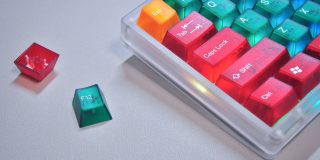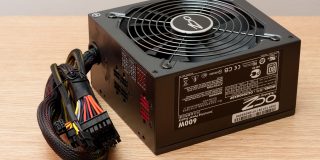How Does PC Water Coolant Work
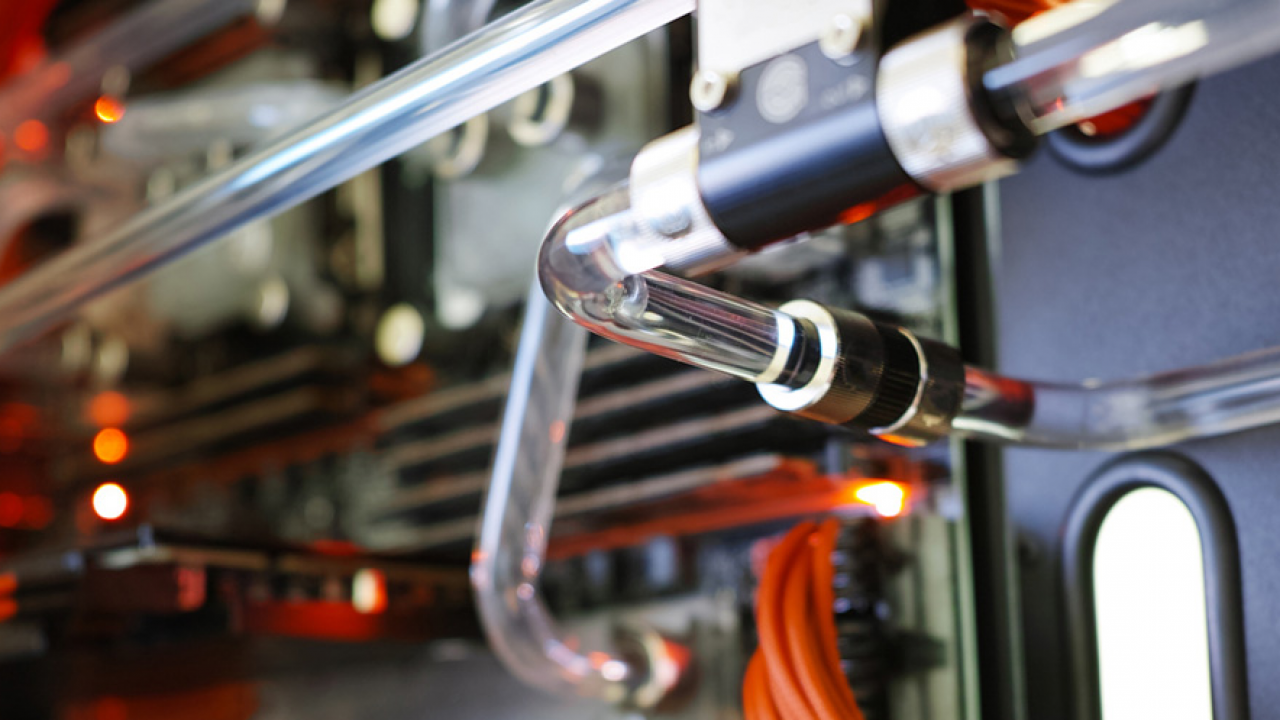
Most of us are acquainted with the whirring of a computer fan. While fans undeniably do a great job at cooling your PC hardware, air is not the only medium that can conduct heat. Other cooling methods, like liquid cooling, might even be more effective at keeping your system performing at its best.
Let’s see how PC water coolants work and whether implementing them in your setup could improve your device’s capacity.
Why Is PC Cooling Important?
We’ll discuss why water cooling is so efficient, but first, let’s briefly go over why your computer needs a cooling system in the first place. The analogy is quite simple. Your brain won’t function at its best when your air conditioner is broken during a heatwave, will it? The same is true for your PC.
CPUs (central processing units) and GPUs (graphics processing units) have become considerably faster as they evolved through the years to meet customer demands. To allow for higher speeds, these components now have more transistors and use more power.
Naturally, these transistors generate a fair amount of heat while doing their job. As they convert electrical energy to thermal energy, the components’ temperature keeps rising. Unless there is a way to get rid of this excess heat, the CPU or GPU can reach unsafe operating temperatures. The highest safe operating temperature for components varies between models, but generally, your CPU temperature should never exceed 185F on full capacity. Needless to say, extreme overheating can seriously damage your PC, but so can operating at high temperatures that are still considered safe for extended periods.
Normally, the motherboard will sense the rise in temperature and tell the components to slow down their operations to prevent a potential catastrophe. Consequently, the user will experience performance issues like slow, unresponsive applications.
The consequences of overheating are even more severe in case the user has overclocked their CPU. This practice is used to reach a higher clock rate than the component’s manufacturer prescribed. But higher performance naturally comes with higher temperatures. Unless the cooling system in place can match this increased demand, the processor can be irreparably damaged.
Keeping the temperature of components low with a cooling system thus aids the computer’s optimal functioning and is indispensable when performing demanding tasks.
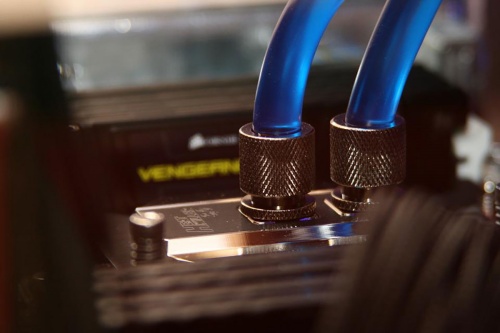
How Does a PC Cool Down?
PCs can use several different cooling methods that all boil down to the same principle. A conductive medium is used to dispel the excess heat from the essential components. This medium can be anything from air through a metal surface to – you guessed it – water. These are the cooler types you will typically see in PCs:
- Fans that blow colder air directly onto hardware components or expel hot air outside
- Heat sinks are small metal objects that draw excess heat from components with their large surface area
- Liquid coolant systems use the high heat conductivity of specific liquids, typically water or oils
These cooling methods are often combined for the best effect. For instance, a fan may be used to help dispel the heat from a heat sink to the surrounding air faster. Similarly, liquid cooling systems utilize a complex arrangement of all these components for a particularly efficient cooling job.
How Does PC Water Coolant Work?
While allowing any kind of liquid near your expensive PC might seem like a bad idea, water cooling systems are invaluable assets of high-performance computers.
A liquid cooling system works much like that of a car. It builds upon the basics of thermodynamics that postulate that heat always travels from warmer to cooler objects in an attempt to create an equilibrium.
In the case of a liquid cooling system, the warmer objects are the computer parts, while the cooler “object” or medium is the coolant. As the two come into contact (though not directly, don’t worry), heat gets transferred, transported to other parts of the system, and eventually dispelled. Once cool, the liquid then circulates back in a closed loop to pick up another round of excess heat, and so on.
Several components are involved in the process described above. The main parts of the system include the following:
- A pump
- A radiator
- A fan
- A reservoir (optional)
- Pipes (or tubes)
- Coolant liquid
How will the liquid cool the components without coming into direct contact with them? The answer is through a base plate. In the first step, thermal paste is used to connect the CPU’s or GPU’s IHS (integrated heat spreader) to a base plate. This base plate is part of the waterblock, which will transfer the heat to the incoming liquid.
The pumps (which are typically located outside the system) move the liquid through the waterblock to the radiator. The heat is then transferred to the radiator and dispelled into the surrounding air, often with the help of a fan to make it faster. At last, another tube takes the coolant back to the waterblock.
The process sounds simple, but there are a lot of moving parts that all need to be just right. The pump you use needs to be powerful enough to circulate the liquid, but it mustn’t do so too fast. Otherwise, the water won’t be able to pick up enough heat to cool down the PC components. Similarly, the tubes can pose a challenge as well, especially since every setup will be different. You must ensure that there are no kinks in the arrangement that could prevent flow.
Finally, a key component in this whole system is the liquid that will do the hard lifting. Although often referred to as “water,” the liquid inside a PC cooling system usually isn’t water. Filling the tubes with tap water could have detrimental effects on your delicate system as contaminants can cause buildup that can potentially clog the pipes. Distilled water is a better choice, and many choose it as a budget option since it eliminates the main issues with tap water.
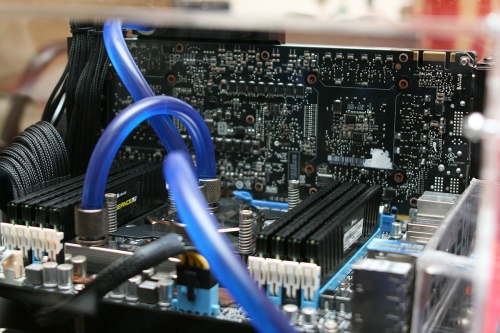
However, there are also special, purpose-made coolants for liquid cooling systems that have excellent heat conductivity and often contain anti-microbial and anti-corrosion additives. These help keep the system healthy and add to its longevity. They also look undeniably awesome with their bright colors in cooling systems with transparent tubes. These coolants also typically don’t conduct electricity or oxidize the PC components in case the system floods the case.
Types of Liquid Cooling Systems
There are two main categories that water cooling systems fall into based on their configuration.
- AIO or all-in-one coolers
- custom cooling loops
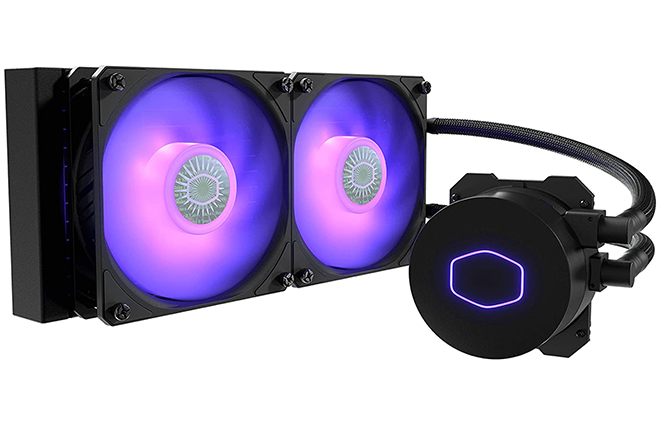
Both of these categories function in the same way. Their difference mainly lies in their complexity. All-in-one liquid coolers have a single radiator and a built-in pump. They utilize an entirely closed system that requires zero maintenance. You’ll never need to open and refill such a cooling system.
More complex custom systems, also called “open” systems, require regular maintenance. These systems can have several pumps and reservoirs that need to be checked every six months or at least yearly. The open system’s clear tubes will allow you to keep the coolant levels in check and act when you notice them dropping. Typically, the system will need to be emptied entirely, flushed, and refilled yearly or every two years at most. However, as the name suggests, this category offers more flexibility in its configuration.
The Pros and Cons of Water Cooling
There are many advantages to installing a water cooling system for your PC:
- Efficient cooling – Liquids have a higher density than air, so they can conduct heat much faster. Using liquid as a cooling agent will thus be more effective at keeping your PC’s temperature optimal.
- Silent operation – You can always add another fan to your PC, but sooner or later, you won’t hear the sound coming out of your speakers with all the noise they produce. A liquid cooling system also uses fans to aid the cooling process. However, these fans don’t have to work as hard to do the job, so they are less disruptive.
- Higher performance – The most significant advantage of liquid cooling systems is higher PC performance. Your CPU and GPU will be able to function at their best without the risk of overheating. The device will also have more overclocking potential.
Nevertheless, this system may not be for everyone. The disadvantages of investing in a water cooling system are the following:
- They are bulky – While an additional fan won’t take up much space in your PC’s case, a water cooling system requires a bit more legroom. As mentioned above, the system has a fair number of components, many of which will end up outside the case. Of course, this can clutter the space around your desktop.
- Their installation requires expertise – Water cooling systems use airtight tubes so no water will get to your computer – as long as everything is installed correctly. Putting all the moving parts of a complex system like this into place undeniably requires expertise. Therefore, this cooling option may not be accessible to everyone.
Ultimately, whether installing a water cooling system will pay off for you depends on your needs and how you use your PC. The above reasons clearly make water cooling preferable to fans and other cooling methods, but the installation process can be intimidating.





